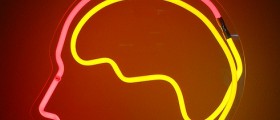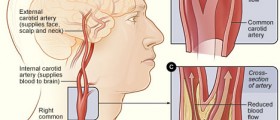
Transient ischemic attack is a condition which is also commonly referred to as mini stroke or TIA. Basically, this condition manifests through a transient occurrence of neurological dysfunction directly caused by the loss of blood flow to the brain, spinal cord or retinal areas, without any actually tissue death taking place.
The TIA bears the name of mini stroke due to the similarity with strokes in terms of the presence of a disruption of the blood flow to the brain and many symptoms which are mutual for the two conditions.
Common Causes of TIA
The most common of all causes related to TIA is the presence of embolus, clogging an artery inside the brain. The embolus gets created from the arterosclerogic plaque present in the cartoid arteries. However, while in regular strokes such obstructions stop the blood supply for the brain for a longer period of time, in TIA the blood flow is cut off for a limited, short timespan, too brief to trigger any serious damage.
Once cholesterol builds up inside the blood vessels, it narrows them in the long run, reducing the delivery of blood to the brain, potentially triggering TIA too, or even causing an actual stroke. In some situations, the fragments of these obstructions may be set loose, finding way to the brain, usually during heart attacks or valve infections, causing TIA as well.
Some other causes of TIA may be increased blood viscosity, stemming from the presence of certain blood diseases. Additionally, hypertension, heart disease, migraines, smoking, diabetes mellitus and hypercholesterolemia, all can result in TIA too.
Speaking of the onset of TIA, the symptoms usually resemble those of an actual stroke. Therefore, the signs of TIA are paralysis of the part of the body opposite from the affected side of the brain or sudden weakness or numbness. Also, TIA may manifest through a decrease of one's field of vision or a complete onset of vision impairment. Furthermore, aphasia, speech difficulty and mental confusion may appear as well. The only difference between a stroke and TIA in these situations is the fact that the signs of TIA disappear withing the first 24 hours while a stroke usually bears permanent consequences.
Diagnosis
The diagnostic process involves the doctor examining the patient's medical history and performing a physical exam on the patient. Sometimes, usually in situations where the current TIA is not the only one in the patient's medical history, the doctor may perform several radiological tests such as a CT scan or the MRI scan of the brain. Additionally, neck ultrasound and the echo-cardiogram of the heart may be necessary. Nevertheless, ultrasound scanning finds the reason behind TIA in most cases, especially if the culprit is atherosclerosis.
TIA may be mistaken for some other conditions which resemble its symptoms. Basically, migraines, partial seizures, glucose or electrolyte abnormalities, hypertensive encephalopathy, subdural hematoma, brain tumors, conversion disorder and demyelinating disease, all can trigger symptoms which are commonly seen in TIA.
Prognosis
Typically, people who have suffered from TIA are thought to be prone to strokes, this occurrence serving as a sort of a premonition. In fact, about 33% of all people who have suffered from TIA, experience this condition at least once again, due the the permanent loss of nerve cells which took place during the initial attack.
Therefore, the TIA should be a wake up call for all those who have been neglecting their health, choosing inadequate, life-threatening lifestyles instead. Fortunately, you can manage to avoid the recurrence of TIA in your life through modifying your lifestyle a bit.
Prevention through Lifestyle Change
First of all, in order to become less prone to TIA, you are advised to stay away from cigarette smoke and stop smoking. Secondly, due to the fact that blood cholesterol may be the culprit behind TIA, avoid consuming food rich in fat and cholesterol. This will keep your blood vessels clear and free of any constrictions or blockages.
As far as the diet is concerned, you can contribute to your overall health by eating fresh fruits and vegetables, consuming less sodium, balancing your blood pressure. Some other lifestyle improvements may involve exercising on a regular basis. This exercising does not have to involve taking up sports. Rather, if you do not have time for working out, take the stairs instead of the elevator, park your car a block or two away from your building or walk to work. All these changes will make you physically active and more resistant to TIA.
Finally, drink alcohol in moderation or do not drink it at all and keep your body weight, blood pressure and blood sugar levels under control.
All in all, transient ischemic attack is a serious health problem and a warning sign our body gives us once our lifestyle has not been quite health-oriented. Fortunately, once you go through TIA, you have the chance of avoiding the stroke by changing your lifestyle to a healthier one.





-Disease-Cause-A-Stroke_f_280x120.jpg)











Your thoughts on this
Loading...